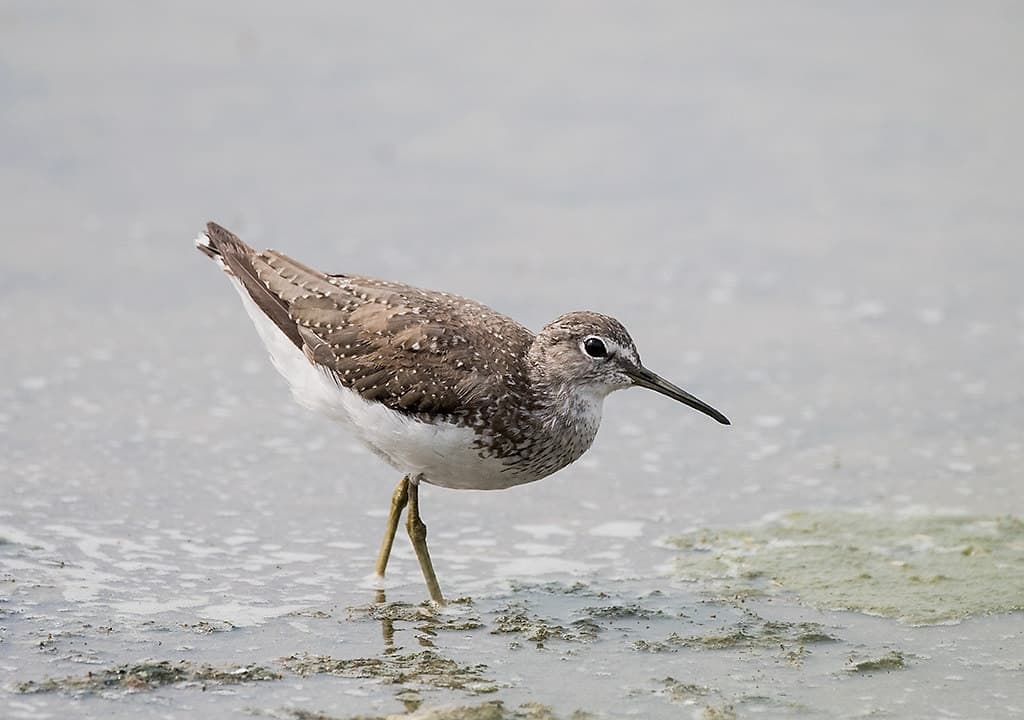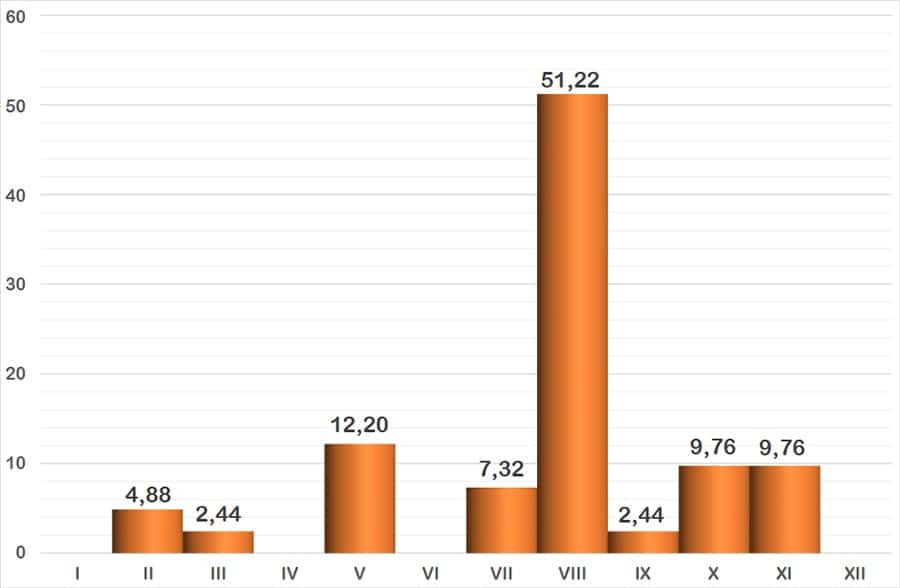Of all the sandpipers, it is the slenderest, even resembling a small redshank. Its long greyish-green legs contribute to its appearance. In summer it has dark olive-brown plumage which is densely flecked with white. The head and breast are finely striped, with a marked white line above the eye contrasting with the dark lines on the head. Its legs are yellowish, and the tail has narrow stripes. In flight, the darker colour of the upper part of the wings, and the lighter underside are noticeable, as is the distinct white rump patch.

La imagen es autoría de Koshy Koshy. Licencia Creative Commons con algunos derechos reservados.
Species 1
Wood Sandpiper
Scientific name
Family 2
Taxonomic Affinity Group 3
Phenology 4
It is a transient bird, wintering birds are exceedingly rare, and in the postnuptial passage it is easily seen in the wetlands of Roquetas de Mar .

The graph represents the probability of seeing a species during the year, grouped into months. The vertical axis indicates the percentage value. Each of the bars expresses its value. The horizontal axis represents the months: I = January, II = February, III = March, IV = April, V = May, VI = June, VII = July, VIII = August, IX = September, X = October, XI = November and XII = December.
Observation recommendations
When perched and restless, it sways its body, but not as much as the Common Sandpiper. It should be looked for on the banks of waterlogged areas while foraging. It is reminiscent of a small redshank, but with the behaviour of sandpipers.
Observation areas where we can find it
Notes
[1] The names used are from the list of birds of Spain, drawn up by SEO/BirdLife and updated to 2019 (https://seo.org/listaavesdeespana/). The reference is: Rouco, M., Copete, J. L., De Juana, E., Gil-Velasco, M., Lorenzo, J. A., Martín, M., Milá, B., Molina, B. & Santos, D. M. 2019. Checklist of the birds of Spain. 2019 edition. SEO/BirdLife. Madrid.
[2] The taxonomic family to which it belongs is indicated.
[3] Traditionally, waterbirds have been grouped according to their taxonomy or “taxonomic affinity”, i.e., when some birds coincide in certain features that allow them to be classified scientifically, but without leaving the rigour of science, they are put together in these groups so that they can be easily recognised. These groups are the following: Greves (belonging to the Podicipedae family), Herons and Similar (includes the families: Ardeidae -Herons- Ciconiidae -Storks- and Threskiornithidae -Ibises and spoonbills-), Ducks (the whole Anatidae family), Coots and Similar (the family Rallidae corresponding to Rails, Gallinules and Coots), Cranes (also with only one family, the Gruidae), Waders , a heterogeneous group, the most diverse of this classification, includes the families Burhinidae (Stone-curlews), Haematopodidae (Oystercather), Recurvirostridade (Avocets and Stilts), Glareolidae (Pranticole), Charadriidadea (Plovers), Scolapacidae and finally Gulls and Similar (the recently unified family Laridae, i.e. Gulls and Terns).
[4] Phenology studies the relationship between the cycles of living beings and meteorological factors, and in our latitude these factors manifest themselves as variations throughout the year, thus relating the seasons to the birds’ cycles (breeding, migratory journeys, etc.) The graph shows the probability of seeing a bird depending on the month. It uses data from 48 bird censuses carried out between October 2016 and September 2018. The method used is that of a census route with sampling stations, with a total count on the sheet of water.
